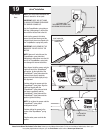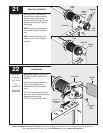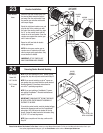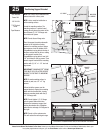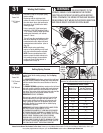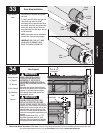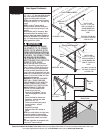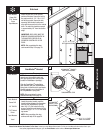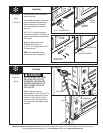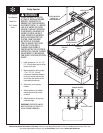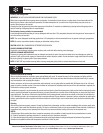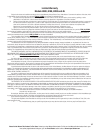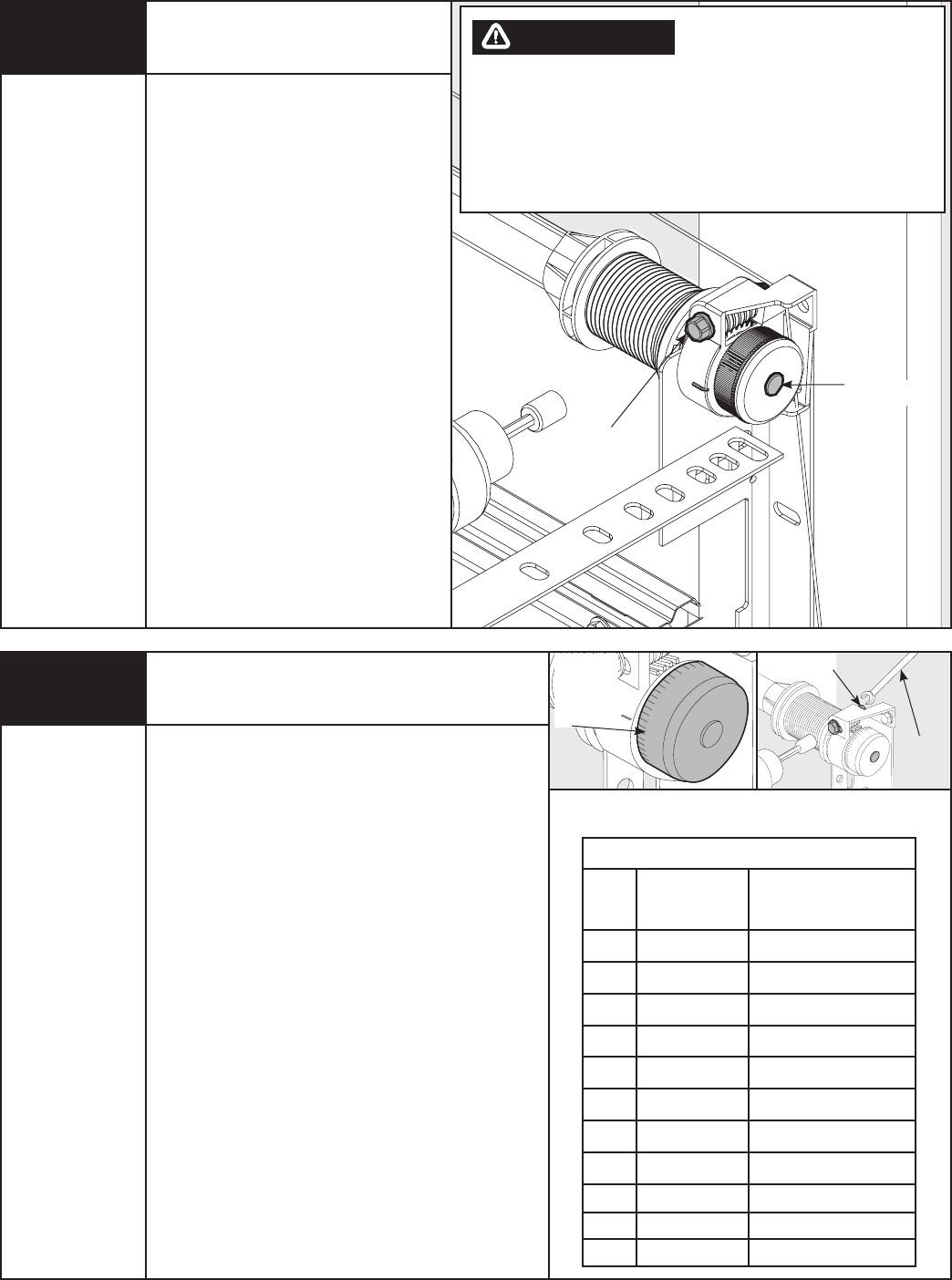
30
Please Do Not Return This Product To The Store. Contact your local Wayne-Dalton dealer. To find your local Wayne-Dalton dealer, refer to your
local yellow pages/business listings or go to the Find a Dealer section online at www.wayne-dalton.com
Tools Needed:
Tools Needed:
See chart in Step 32 for proper spring
tension setting.
Beginning with the right hand side,
ensure the cable is in the first groove of
the cable drum. Apply light pressure to
the canoe clip on counter cover while
winding springs.
Using a power drill (high torque/gear
reduced to 1300 RPM preferred) with a
7/16" socket, carefully rotate right hand
winding bolt clockwise, until counter
shows 2-3 turns.
This will keep the counterbalance cable
taut while adjusting the left hand side
counterbalance cable. Adjust left hand
counterbalance cable tension. (refer to
Step 30)
NOTE: Single spring applications
require no spring winding on left hand
side, but need cable tension adjusted.
NOTE: Ensure counterbalance cable
tension is equal for both sides prior to
fully winding spring(s) to appropriate
number of turns. If cable tension is
unequal refer to Step 30.
Winding Bolt Rotation
Power Drill
7/16" Socket
Driver
Power Drill
7/16” Socket
Driver
7/16" Wrench
31
32
15.5
NOTE: Apply light pressure to the canoe clip on the
counter cover while winding spring(s). See the Spring
Turn chart.
For SINGLE SPRING applications, return to the right hand
side and carefully rotate the winding bolt head clockwise
until the counter shows the correct number of turns for
your door.
For DOUBLE SPRING applications, remain on the left hand
side and carefully rotate the winding bolt head clockwise
until the counter shows the correct number of turns for
your door. Then return to the right hand side and wind the
right hand spring to the required number of turns.
IMPORTANT: DO NOT OVERWIND.
After spring is wound, hold the lock nut (in back of end
bracket) stationary on the right hand side with a 7/16”
wrench while rotating the winding bolt clockwise until
snug. Tightening of the lock nut prevents spring from
unwinding. Repeat for opposite side for double spring
TorqueMaster
®
systems.
IMPORTANT: CAUTIOUSLY REMOVE VICE CLAMPS FROM
VERTICAL TRACKS. ADJUSTMENTS TO THE
RECOMMENDED NUMBER OF TURNS MAY BE REQUIRED.
AFTER REAR SUPPORT ASSEMBLY IS COMPLETE (STEP
39), CHECK DOOR BALANCE. IF DOOR RAISES OFF FLOOR
UNDER SPRING TENSION ALONE, REDUCE SPRING
TENSION UNTIL DOOR RESTS ON THE FLOOR. IF THE
DOOR IS HARD TO RAISE OR DRIFTS DOWN ON ITS OWN,
ADD SPRING TENSION. AN UNBALANCED DOOR SUCH AS
THIS CAN CAUSE IDRIVE
®
OPERATION PROBLEMS.
Setting Spring Tension
RECOMMENDED SPRING TURNS
Door
Height
idrive
®
Operated
Doors 11’-11”
Wide or Less
Manually Operated Door,
and idrive
®
Operated
Doors 12’ Wide or Greater
6’-0” 13-1/2 14
6’-3” 14 14-1/2
6’-5” 14-1/2 15
6’-6” 14-1/2 15
6’-8” 15 15-1/2
6’-9” 15 15-1/2
7’-0” 15-1/2 16
7’-3” 16 16-1/2
7’-6” 16-1/2 17
7’-9” 17 17-1/2
8’-0” 17-1/2 18
SPRING
TENSION
SAMPLE
SETTING
NOTE: For 7’ high doors, 8’, 9’, 10’, 16’ or 18’ wide with
windows, the recommended number of spring turns is 15.
7/16”
WRENCH
LOCK NUT
CANOE CLIP
WINDING
BOLT
PRIOR TO WINDING OR MAK-
ING ADJUSTMENTS TO THE
SPRINGS, ENSURE YOU’RE WINDING IN THE PROPER
DIRECTION AS STATED IN THE INSTALLATION INSTRUC-
TIONS. OTHERWISE, THE SPRING FITTINGS MAY RELEASE
FROM SPRING IF NOT WOUND IN THE PROPER DIRECTION
AND COULD RESULT IN SEVERE OR FATAL INJURY.
WARNING



